What is bioassessment?
For those of you unfamiliar with this effort, our annual spring bioassessment is our largest survey effort of the year. This survey effort focuses on the biological assessment of ten local creeks within the Morro Bay watershed, using an evaluation protocol created by the Surface Water Ambient Monitoring Program (SWAMP) and the State of California.
Bioassessment surveys utilize a number of different criteria to assess creek health, with the primary focus being the assessment of benthic macroinvertebrates (BMIs). BMIs can be used as a proxy to determine stream health, since the abundance or absence of certain species can be an indicator of waterbody impairment. Other focal points of the surveys include sediment size and distribution, habitat complexity, bank stability and flow assessments.
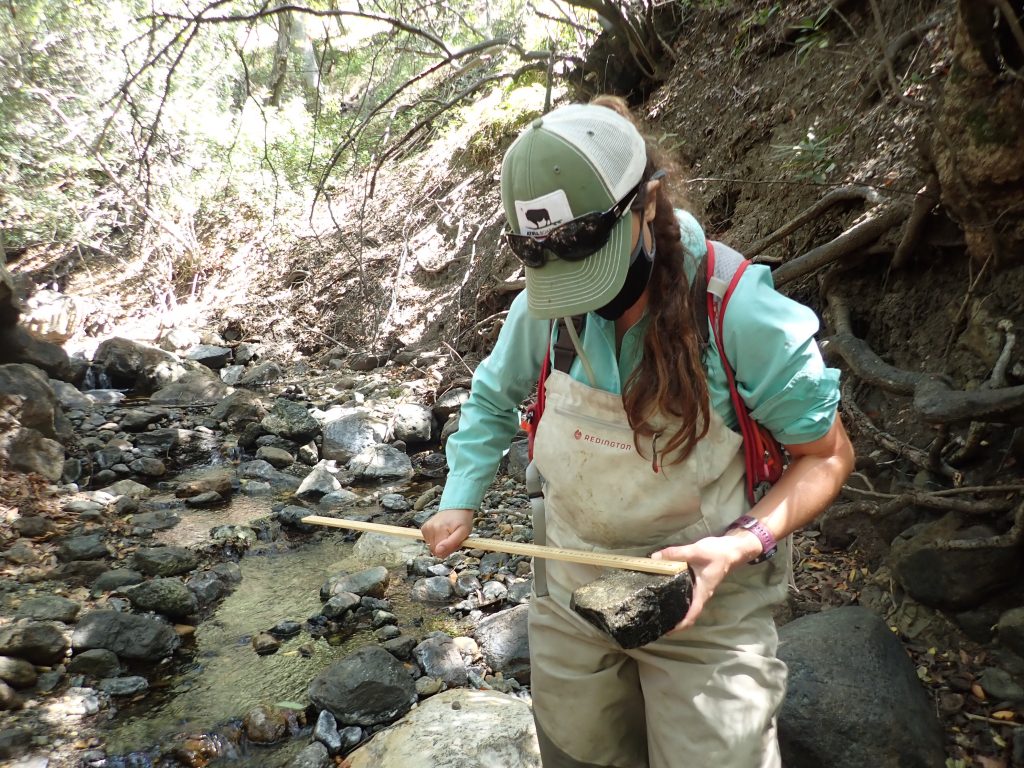
COVID-19 survey adjustments
In the pre-pandemic era (ie. the 2019 bioassessment season and all seasons prior), bioassessment was conducted by a nearly 20-person crew. Staff worked with volunteers to collect nearly 1,000 data points during each survey.
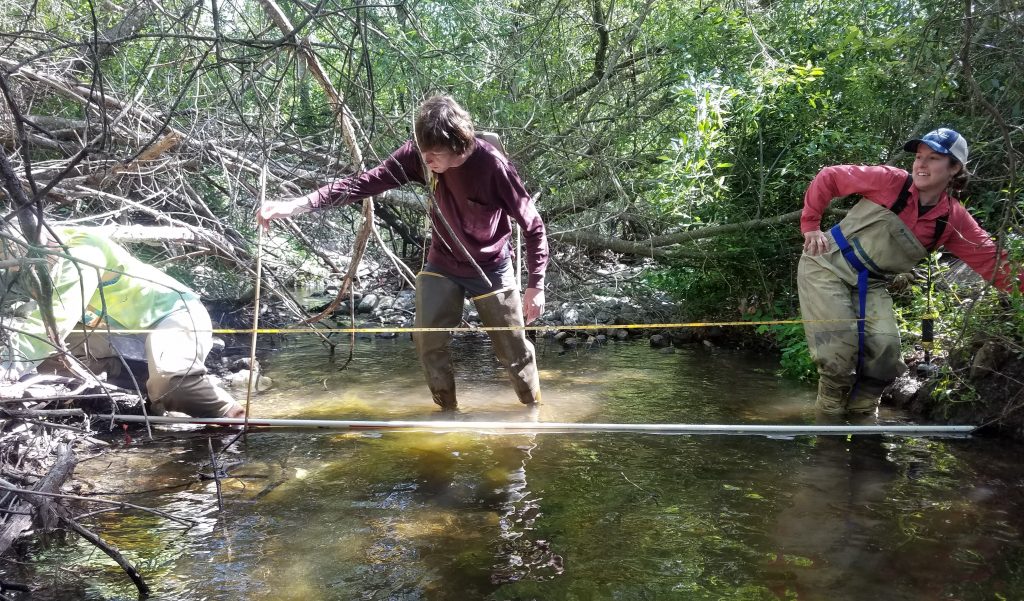
Due to the still-present concern surrounding the COVID-19 pandemic, the Estuary Program utilized a small three-person crew for both the 2020 and the 2021 season. For the 2020 and 2021 seasons, staff wore masks and maintained a minimum of six feet of social distance during each survey to ensure the health and safety of the crew. Sites deemed too narrow to maintain social distance were excluded from the effort.
2021 bioassessment highlights
This year’s bioassessment may have been the most jam-packed survey season to date! Our three rugged monitoring team staff members conducted ten bioassessment surveys within only fourteen days. That’s nearly 10,000 data points, collected by three people, in only two weeks!

Wildlife sightings while monitoring
The monitoring team had some interesting wildlife sightings along these surveys, including American bullfrog (Lithobates catesbeianus), a number of California newts (Taricha torosa), and even a bobcat (Lynx rufus)!
While some of these species are exciting to see, others, like the bullfrog, are concerning. Bullfrogs are highly invasive in California and are known to predate on California red-legged frogs (Rana draytonii), a threatened native species. Estuary Program staff have notified California Department and Fish and Wildlife’s Invasive Species Program about this sighting.
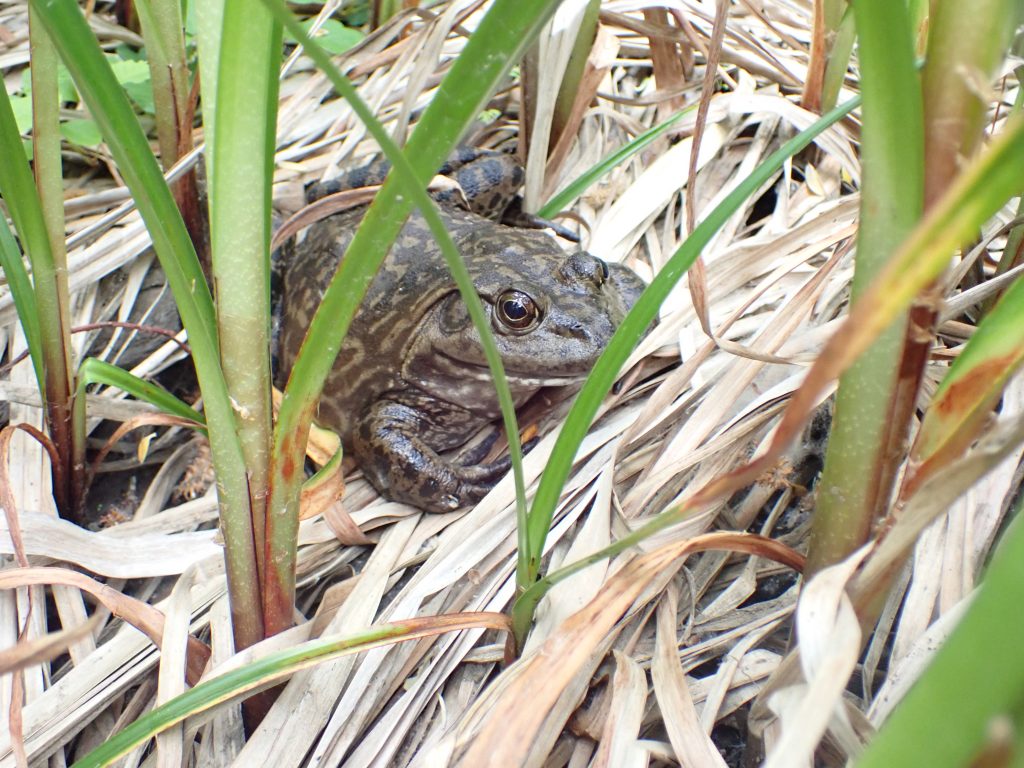
As mentioned, Estuary Program staff saw a number native California newts (Taricha torosa) on Upper Pennington Creek, as they continue through their spawning season. T. torosa are endemic to California, meaning they are not found anywhere outside of California, and tend to live in upland habitats like oak woodlands and chaparral when they are not breeding. During mating season, the newts migrate to intermittent creeks like Pennington Creek, where they lay their eggs. Females lay spherical egg masses containing seven to forty-seven eggs per mass, and attach them to rocks, sticks and woody debris for safe-keeping.
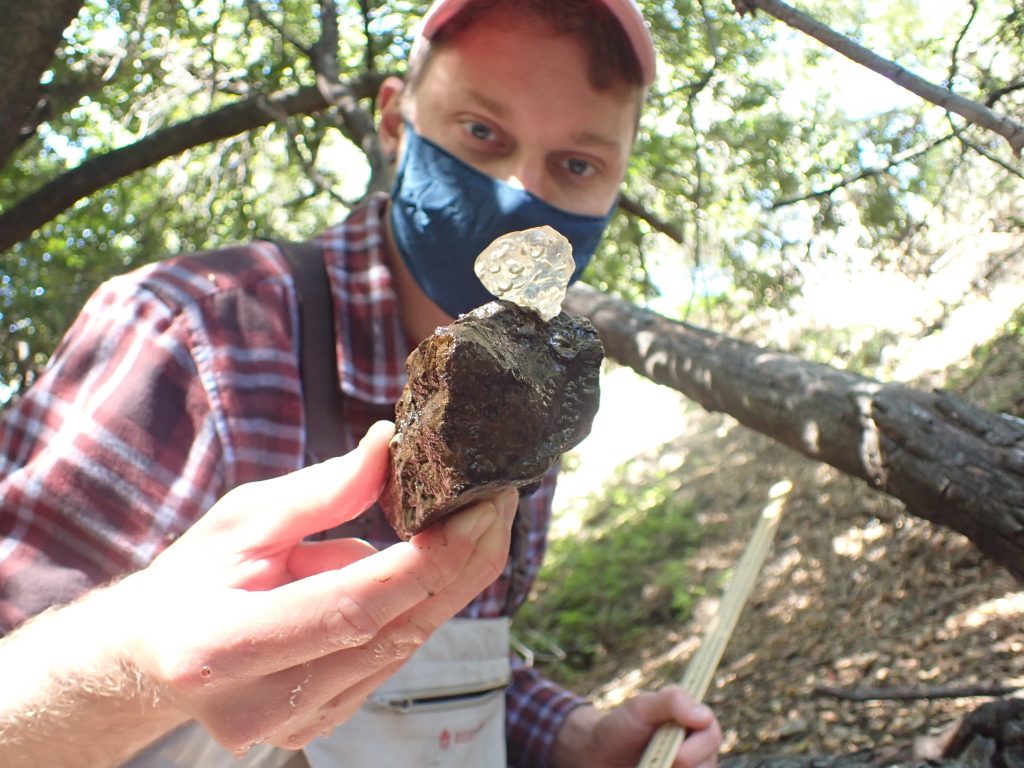
Benthic macroinvertebrates aka BMIs aka aquatic bugs surveyed
In addition to wildlife sightings, the monitoring crew observed lots and lots of bugs (ie. benthic macroinvertebrates or BMIs)! Among the plethora of bugs included the larval forms of caddisflies, mayflies, stoneflies, dragonflies, and water pennies, as well as gilled snails. Each BMI has a slightly different tolerance of polluted water, and as such, the abundance or absence of certain species can indicator good or poor water quality. For example, caddisflies and stoneflies and mayflies indicate good water quality, since they are unlikely to thrive in highly impaired waterbodies.
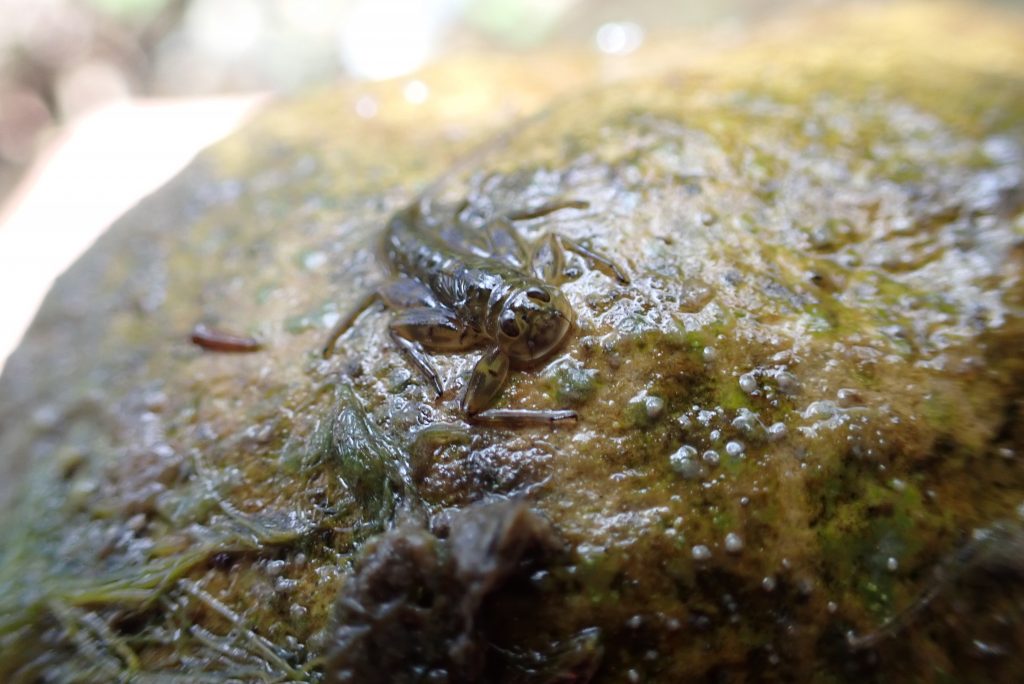
As of this week, all of our bioassessment BMI samples have been shipped off to our lab for further identification and taxonomy. We are excited to share the results of our 2021 season when we get our data back!
Staff updates
This year’s bioassessment surveys were the final set of field work surveys completed with Karissa, our long-time Monitoring Projects Manager, on staff. Karissa has been with the Estuary Program since October of 2014. Over the years, she has collected thousands of samples and data points and spent countless hours managing that data. She has worked with dozens of volunteers, written a wide variety of blog posts, served as our unofficial field photographer, and been a key member of the Estuary Program team. Karissa is moving on to a new position in Oregon, where she will continue doing the scientific fieldwork that she loves. She will be missed!
As Karissa departs, we welcome Bret as our new Monitoring Projects Manager. Bret comes to us from Ann Arbor Michigan, where he worked as a Case Development Lead and then an Education and Outreach Coordinator at the University of Michigan’s School for Environment and Sustainability. Prior to that, he earned a Master of Science in Environment and Sustainability with a Conservation Ecology Focus. We are glad Bret has decided to migrate to the West Coast and join our team!
Updates from our volunteers
As of April 28th, San Luis Obispo County moved from the red tier and into the orange tier, as outlined by COVID19.ca.gov. Under the previous tier, the Estuary Program’s Volunteer Monitoring Program began bringing back volunteers in a limited capacity. Under the new less restrictive orange tier, we look forward to continuing to bring back additional volunteers, as is safe to do so.
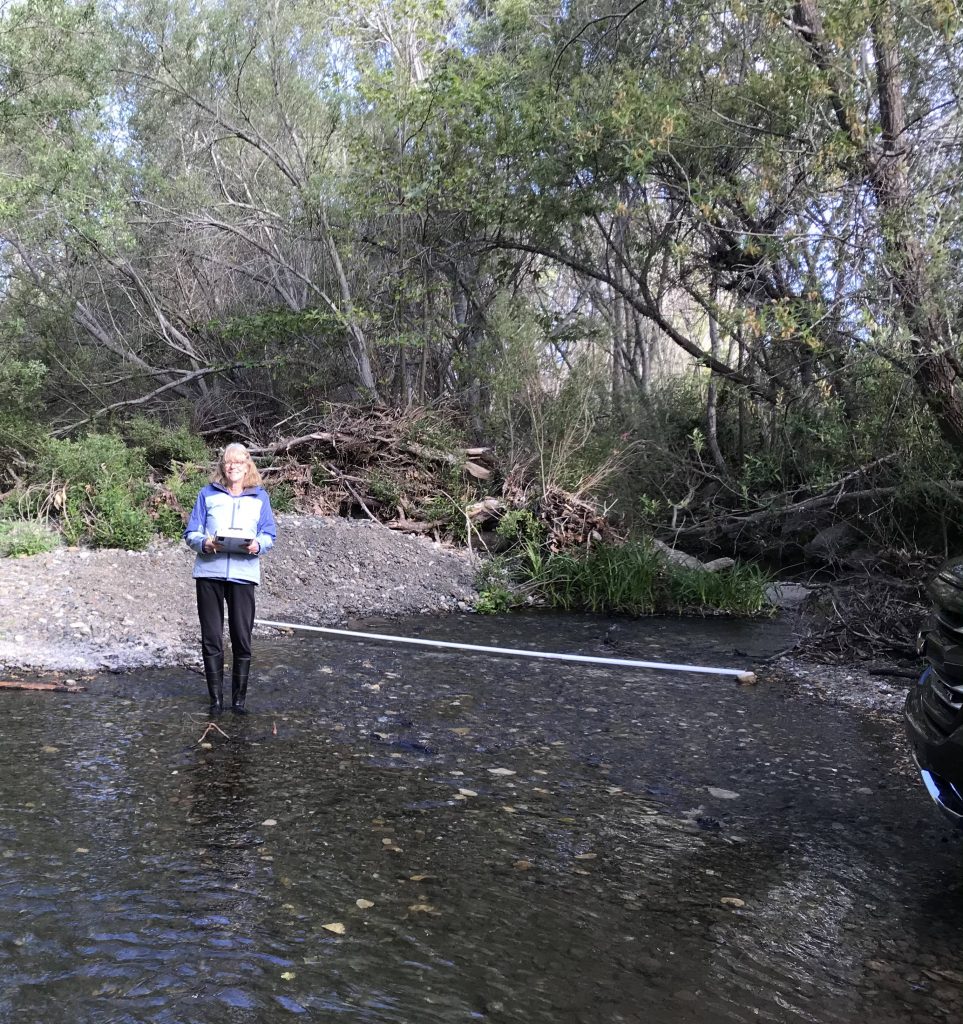
For our volunteers who have stuck with us through this patch of uncertainty, we thank you! The last year has confronted so many of us with profound hurdles and hardships, and we are incredibly grateful for our long-time, dedicated volunteers who have been eager to back into the field.
Although the Estuary Program is not currently recruiting new volunteers at the moment, we look forward to incorporating new additional support this fall. Be sure to stay tuned with our field updates posts to hear more about volunteer opportunities the Volunteer Monitoring Program!
Help protect and restore the Morro Bay estuary
- Donate to the Estuary Program and support our work in the field, the lab, and beyond.
The Estuary Program is a 501(c)3 nonprofit. We depend on funding from grants and generous donors to continue our work. - Support us by purchasing estuary-themed gear from ESTERO. This locally owned and operated company donates 20% of proceeds from its Estuary clothing line and 100% of Estuary decal proceeds to the Estuary Program. Thank you, ESTERO!
- Purchase items from the the Estuary Program’s store on Zazzle. Zazzle prints and ships your items, and the Estuary Program receives 10% of the proceeds. Choose from mugs, hats, t-shirts, and even fanny packs (they’re back!) with our fun Estuary Octopus design or our Mutts for the Bay logo.